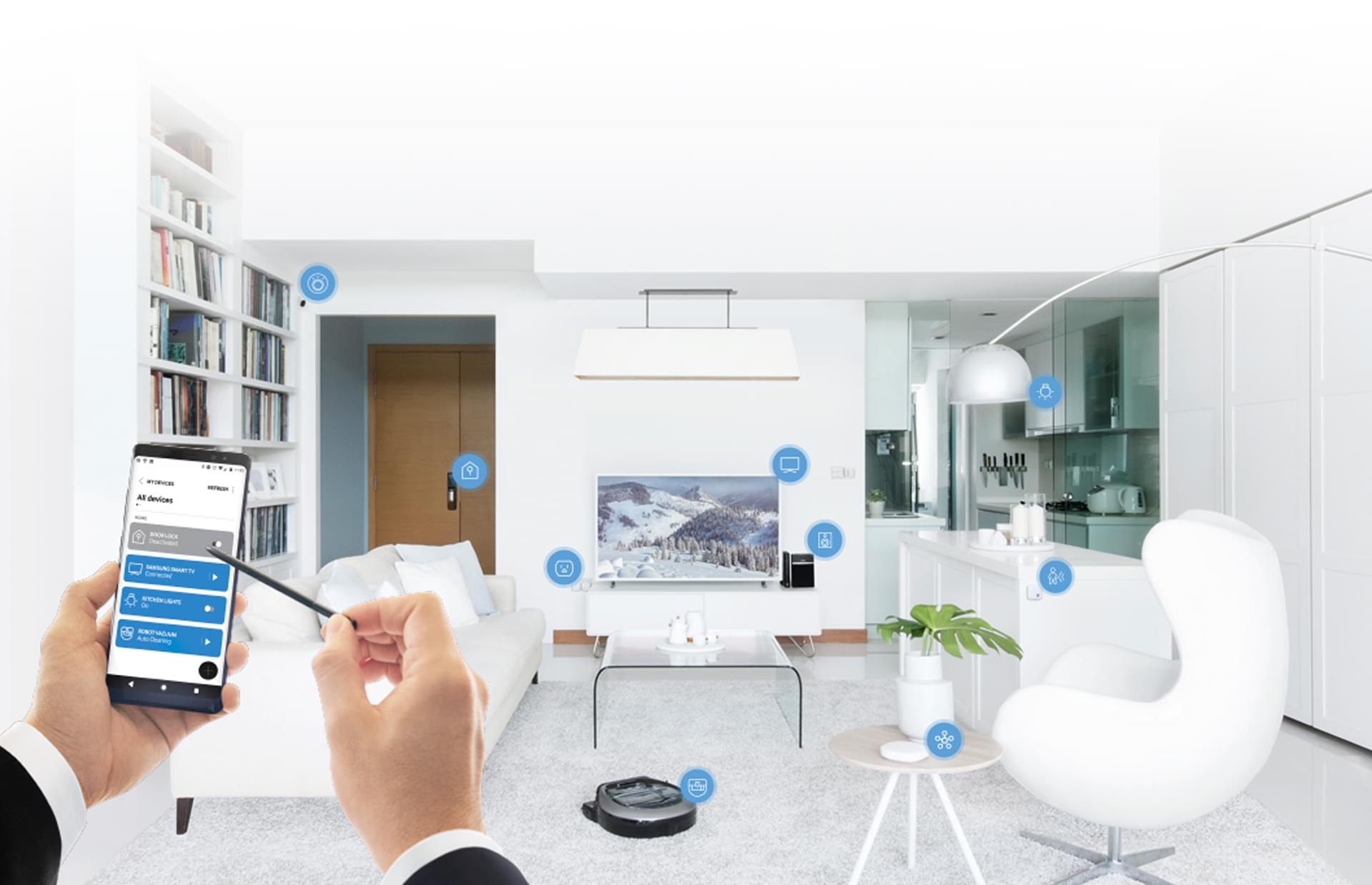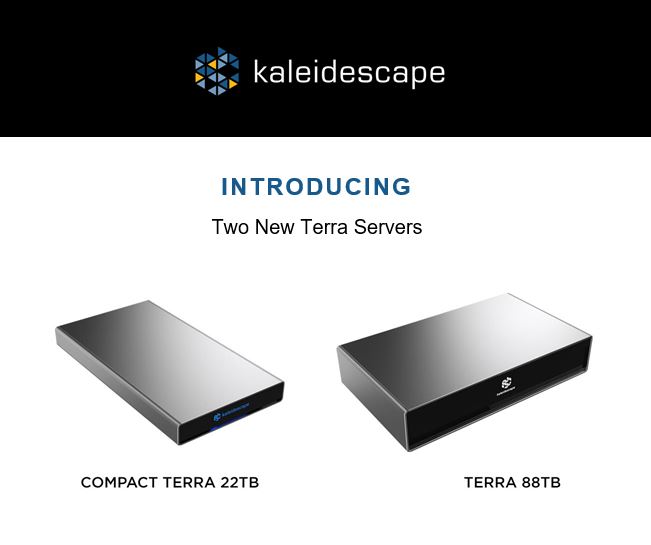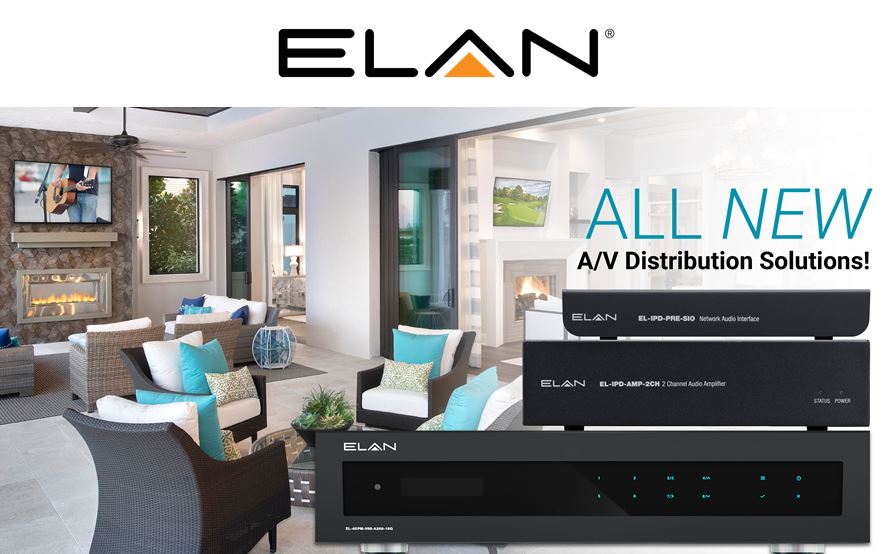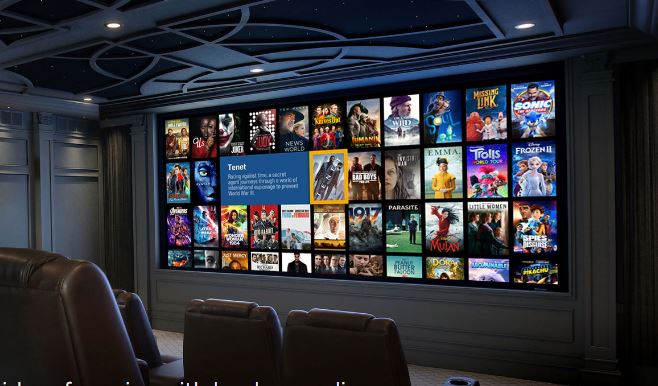
Smart Home Tips For 2020
There’s little doubt, the number of smart devices in people’s homes is increasing. Here are 11 tips for designing your smart home in 2020. These tips come from my own experience as well as Haas Entertainment in-house system engineers and our staff of on-site technicians. If you have suggestions, please leave them in the comments below.
1. Have a robust home network

We recommend enterprise grade network equipment, designed & installed by real professionals; someone certified by the HTA. Strong Wi-Fi is a must and we recommend installing with the future in mind. The next Wi-Fi standard is called Wi-Fi 6 and it supports multiple users simultaneously at gigabit speeds. Make sure your hard-wired infrastructure supports this future standard by using CAT6a in as many rooms as possible. I can’t stress this enough especially if you have several high bandwidth devices like security cams and media streamers.
2. Map Wi-Fi & Cell RF dead zones

Your phones, tablets, laptops and other smart devices will connect using Wi-Fi & Cellular. They are a subset of something called RF or “Radio Frequency”. The better your house is built; the worse your signal will be. This is because RF has a hard time traveling through dense materials. We recommend going through every part of your house and finding/mapping the dead zones. These dead-zones can always be fixed with proper planning or a donor-antenna placement strategy.
3. Use smart voice control

There are so many voice-activated devices nowadays. Alexa, Cortana, Siri, Google Home, etc. Virtually all of them leave me wanting more. At times it can be down-right frustrating. Don’t get me wrong. Voice control is amazing, when it works. If you’re considering voice control go with a professional solution like Josh.AI – Speak with your home in whatever way you feel most comfortable—Josh understands any number of nicknames for a device, room or scene. Their proprietary Natural Language Processing technology lets you speak to your home naturally, like you would a family member or friend. You can also use compound commands to set off a chain of actions with only one voice command.
4. Make a smart home plan

A smart home will have several devices, each with its own IP address. It’s not uncommon to have a dozen usernames and passwords associated will all the different brands. Have a spreadsheet with all the devices listed, their addresses, associated credentials, etc. This will make tech support and system service much easier. While creating your spreadsheet be sure to accurately name your smart devices and include a room name & floor number. i.e. FL2 Balcony Smart Speaker, FL1 Breakfast Nook Hanging Pendant & L0 Wine Cellar Thermostat, etc. – This will eliminate a lot of confusion later on.
5. Smurf Tube in the walls

TV technology changes all the time and the HDMI cables that work for you today may not be suitable for high-data bandwidth technology just a few years down the road. In fact, we already know 8K televisions will require something called HDMI 2.1 that runs at 48Gbps. Your best bet is to install “Smurf Tube” in those areas. That way you can easily replace a cable once the walls are closed up.
6. Install Fiber Optics

Fiber Optic Cable should be run in every home as it is inexpensive and supports very high bandwidth. It also resists water, temperature fluctuations and electromagnetic interference. If that weren’t enough, it helps with your home’s resale value. Of the 11 smart home tips for 2020, running fiber optics is the biggest no-brainer, even if it’s only from demarcation to the equipment rack.
7. Forget smart thermostats
Smart thermostats usually have a big screen and a Wi-Fi connection, both of which require lots of power.
Use home automation thermostats instead.

Instead, hardwire thermostats that communicate with your home automation system (Crestron, Elan, etc.) into the equipment rack and install sensors throughout the home. Did you know a typical home spends close to half the energy bill on heating and cooling? A well programmed thermostat has the potential to pay for itself.
8. Protect your privacy

Make 100% certain you know & trust the company that’s installing your surveillance cameras & network. That’s the best way of preventing a terrible invasion of privacy. Start by making sure your system integrator is HTA Certified. Not only is Haas Entertainment HTA Certified but we’ve been a member of the Culver City community for over And always consider self-hosted options first to ensure you’re in control of your data. Installed IP security cameras should support privacy masking and record to an NVR (Network Video Recorder) instead of the cloud. Keep that NVR locked up.
9. Use energy storage & arbitrage

Whole home batteries, like the Sonnen ecoLinx, controllable circuit breakers and energy automation software to allow you to choose how long your backup power will last during a grid outage. It works with certain power companies to help manage peak electricity loads. During periods of high usage, the unit will run off electricity it’s been storing. This makes it easier for the power company to provide consistent power and they reward you with a lower rate. When that happens, the unit buys extra and stores it. You get the added bonus of clean power during blackouts.
10. Don’t compromise on smart speaker sound quality

Stream to different speakers synchronized throughout your home. There are several systems that will allow multiple users to play your music library anywhere throughout the house. A high quality music file, DTS Play-Fi lossless audio for example, when matched with high quality speakers and amplifier can make a tremendous impact on your mood, productivity and overall well-being. There are also systems from Roon, Lode Audio & Sonos that you may want to consider.
11. Best Tip: Hire professionals

If the project is large enough, an architect can save you a bundle of money by helping you avoid many building-related pitfalls. Obviously you’ll find one who’s a member of the AIA. The same goes for an interior designer. Find one who’s a member of ASID. When it comes to home technology, find an AV integrator who’s a member of the HTA and CEDIA.
I hope you enjoyed reading 11 Smart Home Tips For 2020. Please let us know what your favorite tip is in the comments section. Also, please share this with a friend or colleague.





Leave a Comment